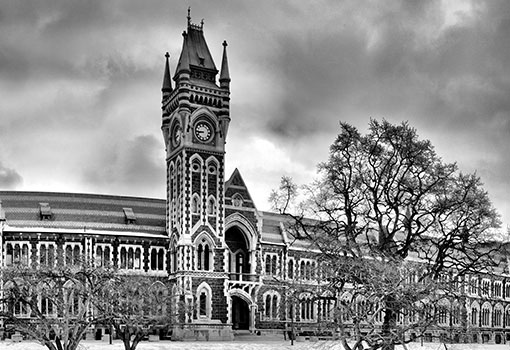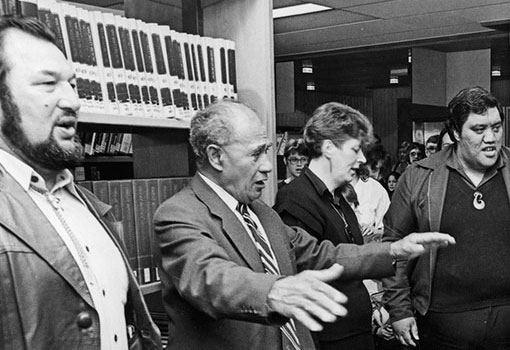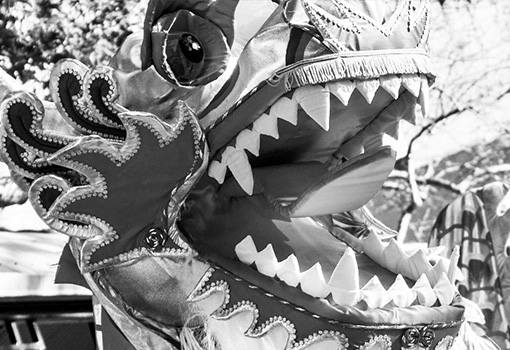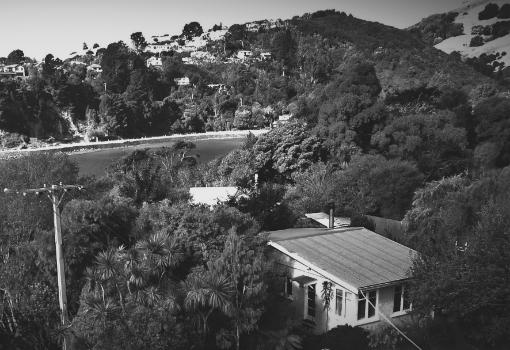
“The Track”: word-walking through pain
Posted: Monday Oct 07, 2019
"I counted my footsteps and made alphabetical lists of things (one two three ant, one two three bee) without missing a single beat.” – Paula Green, The Track.
In 2015, poet Paula Green set out to walk the 70 km-long Queen Charlotte Track at the top of New Zealand’s South Island. The track winds from bay to bay from Meretoto/Ship Cove to Anakiwa, a 3-5 day walk through a beautiful and historic landscape. All went according to plan until, on the longest day and during a violent storm, Paula slipped, sustaining two foot fractures. Ten hours of painful walking lay ahead.
Before her accident, Paula was already walking as a poet, collecting images and stories as she traversed the track. The “slap / of pain in the midst / of walking” changed everything. From this moment on, Paula is, quite literally, word-walking out of the bush. The alphabet itself becomes a crutch, rhythm becomes a painkiller, and each line lays down another small segment of the track underfoot.
Paula’s recently-published poetry collection, The Track, is an account of this journey.
It is fascinating to read the sequence of poems in The Track as an account of how pain alters perception. Pre-injury, the poems are alive with colour and sound. On day one, for instance, at Ship Cove, teenagers “shriek” and the sea keeps changing colour – it’s “azure blue”, then “basil or dill”. Stones are “ochre mustard tangerine”. The poet’s attention is fixed to the world, eyes and ears wide open, taking in detail after detail. As she walks, she thinks, musing on history, pondering what Captain Cook and Tupaia saw and heard in this same bay two and a half centuries ago. Maybe “this exact pebble”? The poet’s physical body is a gentle presence that simply gets on with its job of walking and breathing, and that inasmuchas it makes itself felt does so pleasantly and without obstruction. It’s not fear but the sudden apprehension of the strangeness of deep time that makes hairs rise on the arm, for example, as each breath “links / this breath to the next breath / and the next and the next / and the next across centuries until / I am breathing upon the ship.”
In this first part of The Track, the poems are kaleidoscopes of vivid colour and keenly-observed detail. We walk through green leaves, black-barked beech, cobbled light, burgundy leaf, ostrich and lemon-curd stones; we hear tūī and a “trombone wind”. We walk, too, through reflections and memory, the poet “sidestepping a giggle Gertie birthday party / at six” in one poem and, in another, asking herself:
Am I true to myself
in the middle of walking
carrying the lightness of beauty
like a body craving flight?
This is walking (and writing) at meditational pace. The result is a sequence of beautiful poems – not in a glossy and superficial way but in a way that darkens and complicates over time. The brightness is overshadowed from the beginning by knowledge of a forecast storm until, in “Tawa Saddle”, the poet is “walking into Julys’ teeth / in the mouth of November.” At midpoint in the collection, this storm hits.
Pain forces the body to the forefront of consciousness, and not in a sensual or pleasant way. No more (mostly) ambling along in a (mostly) obedient body, attending to the landscape and to memories, plans, hopes and dreams. Pain dominates. It demands attention. It’s the thudding base of next door’s party at midnight; it’s the colicky baby at 5 pm. Everything else retreats. As Paula writes, “only sideways glimpses / from this dripping midpoint”. Anyone who has moved in pain will know how difficult it is to find a way to sing louder than pain can scream. The last half of The Track is an extraordinary record of one way to do it: by making and memorising a long poem in your head.
These poems are intense and urgent, pulsing with the pressure of pain and the need to walk through it. They “can’t miss / the beat of the track”, and so they don’t. Line after astonishing line unfurls in alphabet lists of animals, cities, food, novels, movie directors, musicians, children’s books and colours. The pulse of the language and the magnetism of the imagery works a magic. Paula is both in the moment, walking, and away from the moment, imagining and creating and remembering. Step by step happens word by word, as this extract from the end of “Counting Cities”, for example, shows:
… Shanghai a dream tug and I’m back in the gondola
photographed Tokyo first foreign city going round round
on Yamanote Line and a hula hoop at seven or Urmia
think of Persian women writing poems boating watery
Venice a jig in the streets the Warsaw of fiction Tiananmen Square
in China weep and put the lid on the teapot green steaming
have carried a flask old York still drinking tea midstream walking
The Track is a powerful, empowering and deeply affecting collection.



